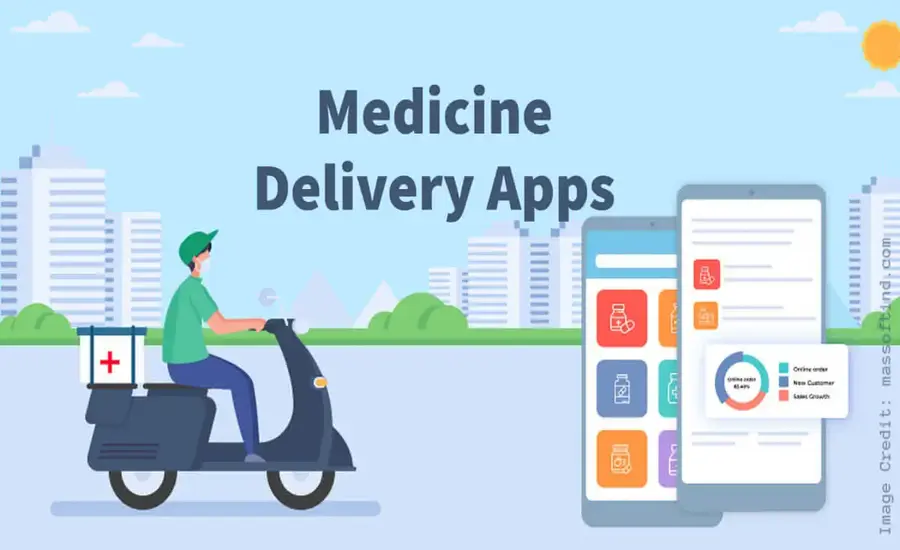In today’s fast-paced world, the convenience of on-demand services has transformed many industries, including healthcare. Medicine delivery apps are rapidly gaining traction, allowing users to order medications from the comfort of their homes. If you’re considering launching a medicine delivery app, understanding the development process, essential features, technology stack, and associated costs is crucial. This guide covers everything you need to know about medicine delivery app development, with insights on collaborating with reliable app development companies and understanding the mobile app development cost.
Medicine Delivery App Development: Everything You Need to Know
1. Introduction to Medicine Delivery Apps
Medicine delivery apps provide users with a digital platform to search, purchase, and have medications delivered directly to their homes. With the rise in online health consultations, the need for convenient medicine delivery services has skyrocketed. This digital solution benefits not only patients but also pharmacies and healthcare providers, who can streamline their services and expand their reach.
These apps are especially valuable for patients who may struggle to access physical pharmacies, such as elderly patients, those with mobility challenges, or individuals in rural areas. As a result, investing in a medicine delivery app is a strategic move that can contribute to improved healthcare access and outcomes.
2. Why Invest in Medicine Delivery App Development?
Investing in a medicine delivery app offers numerous benefits:
- Enhanced Accessibility: Medicine delivery apps provide an easy way for patients to access medications, ensuring adherence to prescribed treatments.
- Streamlined Operations: Pharmacies can manage orders efficiently and track deliveries through a single platform.
- Increased Customer Loyalty: With a convenient and reliable service, users are likely to return, boosting customer loyalty.
- Market Demand: The on-demand healthcare market is growing, with medicine delivery services becoming increasingly popular among patients and providers alike.
3. Core Features of a Medicine Delivery App
To create a successful medicine delivery app, the following essential features should be considered:
A. User Features
- User Registration & Profile Management: Simplify registration using phone numbers, emails, or social media.
- Medicine Search & Browsing: Enable users to search for medicines, view product details, and check availability.
- Prescription Upload: Allow users to upload prescriptions for medications that require authorization.
- Order Placement & Tracking: Provide an intuitive ordering process, with real-time order tracking.
- Payment Gateway Integration: Offer multiple payment options, including credit/debit cards, digital wallets, and COD.
- Push Notifications: Notify users about order updates, promotions, and refill reminders.
- In-App Chat/Customer Support: Enable users to chat with pharmacists or customer support for inquiries.
B. Pharmacy Features
- Inventory Management: Pharmacies can monitor stock levels and receive alerts when inventory is low.
- Prescription Validation: This feature allows pharmacists to review and validate prescriptions.
- Order Processing & Dispatch: Streamline order processing, from order acceptance to dispatch.
- Analytics & Reporting: Provide insights into sales trends, customer behavior, and inventory needs.
C. Delivery Features
- Delivery Management: Assign deliveries to drivers and track the progress of each delivery.
- Route Optimization: Optimize routes to minimize delivery time.
- Proof of Delivery: Capture signatures or images to confirm delivery completion.
D. Admin Panel Features
- User Management: Manage customer profiles, pharmacy listings, and delivery personnel.
- Order Management: View, update, and monitor all orders in real-time.
- Reports & Analytics: Access detailed reports on sales, revenue, and user engagement.
- Promotions & Discounts: Create and manage offers to boost engagement and sales.
4. Technology Stack for Medicine Delivery App Development
Choosing the right technology stack is essential for a seamless user experience and app performance. Here’s a typical technology stack for a medicine delivery app:
- Frontend: React Native, Flutter, or Swift for iOS and Kotlin for Android.
- Backend: Node.js, Django, or Ruby on Rails for server-side processing.
- Database: MySQL, PostgreSQL, or MongoDB for secure data storage.
- Payment Gateway: Stripe, PayPal, or local payment gateways for secure transactions.
- Push Notifications: Firebase Cloud Messaging (FCM) or Apple Push Notification Service (APNs).
- Real-Time Tracking: Google Maps API for location services and route optimization.
A well-rounded medicine delivery app development company will guide you through selecting the right technology stack based on your budget, timeline, and app requirements.
5. Steps Involved in Medicine Delivery App Development
The process of developing a medicine delivery app typically involves the following steps:
A. Market Research & Planning
Understanding market demand, competitor analysis, and user expectations is the first step. Analyzing the needs of potential users helps in defining the app’s features and functionalities.
B. Define App Requirements
Outline essential features based on user needs, and prioritize functionalities. This phase includes creating wireframes to visualize the app’s structure.
C. Design & Prototyping
A medicine delivery app should have an intuitive and user-friendly design. This step involves creating UI/UX designs, with a focus on simplicity, accessibility, and ease of navigation.
D. App Development
The actual development process begins with front-end and back-end development, where the app’s features are implemented based on the defined requirements and designs.
E. Testing
Testing is crucial for identifying and resolving issues. Conduct rigorous testing, including usability, performance, and security tests, to ensure a smooth user experience.
F. Launch & Maintenance
After final testing and bug fixes, the app is deployed on the app stores. Post-launch, ongoing maintenance is necessary to update the app, fix bugs, and add new features.
6. Cost of Developing a Medicine Delivery App
The mobile app development cost for a medicine delivery app can vary significantly based on several factors:
- App Complexity and Features: The more complex the app (e.g., real-time tracking, in-app chat, or advanced analytics), the higher the cost.
- Design Complexity: Custom, user-centric designs may require additional time and resources.
- Development Hours: Hourly rates vary across regions. For instance, developers in North America may charge between $100 to $150 per hour, while developers in regions like Eastern Europe or Asia might charge between $30 to $70 per hour.
- Testing & Quality Assurance: Rigorous testing is essential, and it may add to the overall cost.
- Ongoing Maintenance: Budgeting for maintenance, including updates and security patches, is critical to keeping the app up-to-date.
Estimated Cost Breakdown:
- Basic Medicine Delivery App: $20,000 – $30,000
- Mid-Level App with Advanced Features: $30,000 – $60,000
- Complex App with Premium Features: $60,000 – $100,000+
Collaborating with an experienced medicine delivery app development company can ensure efficient use of resources and optimized mobile app development cost.
7. Choosing the Right Medicine Delivery App Development Company
Selecting a reliable medicine delivery app development company is critical for a successful project. Here’s what to look for:
- Industry Experience: Choose a company with experience in healthcare or on-demand delivery apps.
- Portfolio & Reviews: Review past projects and client feedback to gauge quality.
- Technical Expertise: Ensure the company has expertise in the latest technologies like React Native, Node.js, or cloud integration.
- Compliance Knowledge: Healthcare apps require strict data security and compliance with regulations like HIPAA in the US or GDPR in Europe.
- Post-Launch Support: Look for a company that offers ongoing support and maintenance.
8. Future of Medicine Delivery Apps
As technology advances, medicine delivery apps will incorporate more sophisticated features like AI for personalized recommendations, predictive analytics for inventory management, and blockchain for secure transactions. Integration with wearable health devices and telemedicine platforms is also on the horizon, paving the way for more comprehensive healthcare solutions.
Conclusion
Medicine delivery app development is an exciting opportunity to provide a valuable service in the healthcare sector. By understanding the essential features, selecting the right technology stack, estimating the mobile app development cost, and choosing a reliable medicine delivery app development company, you can create an app that meets users’ needs and establishes a strong foothold in the market. As on-demand healthcare continues to grow, a medicine delivery app can be a strategic asset, providing convenience, enhancing customer loyalty, and improving access to essential medications for all.










